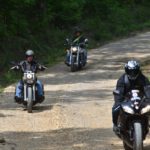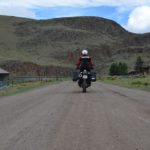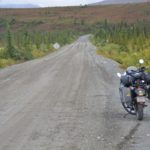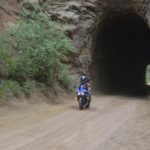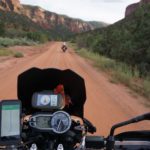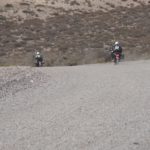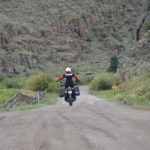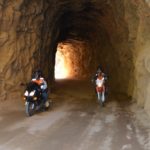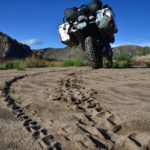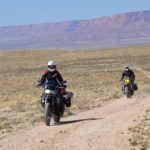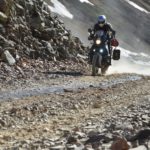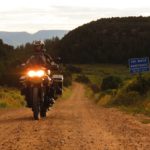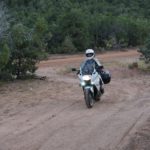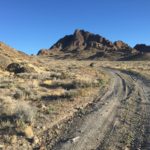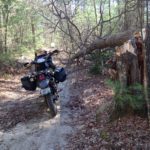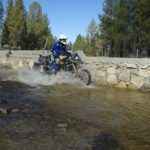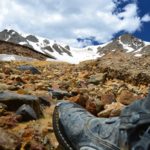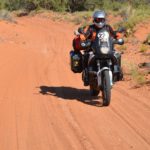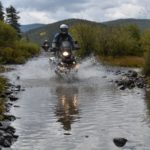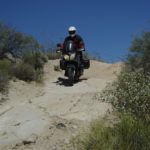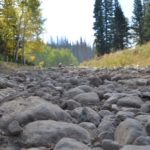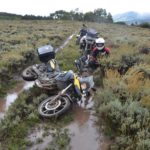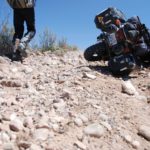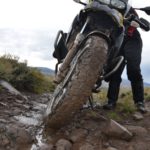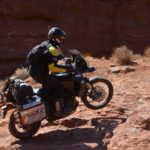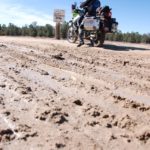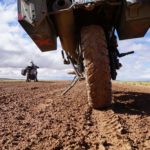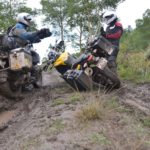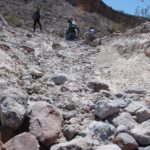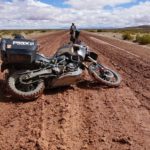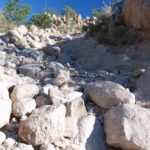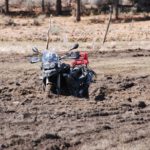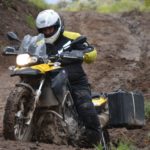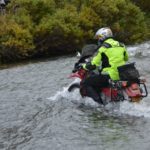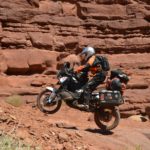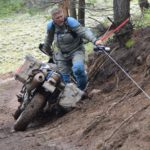ADVENTURE SKILL RATING TKACSONOMY
© 2017 Bret Tkacs
All rights reserved
Time spent on a motorcycle can work in favor of skill development,
but time spent on a motorcycle does not define your skill level.
As a professional motorcycle trainer and adventure tour guide, Bret is regularly challenged to help adventure motorcycle riders rate their riding skills on various trails. He has seen riders who have traveled the world but retain very basic off-road skills. On the other hand, some riders brand new to the ADV world end up being very skilled with their motorcycle and move quickly to being an advanced rider.
There are two parts to this complex rating system. The first section discusses how to use this system and some of the assumptions that are made in taking into account the complexities of rating a person’s skill to the type of terrain they’re riding. The second section is a visual reference that explains what each terrain feature looks like. Within each terrain feature, a rider can be at the beginner level (rookie), intermediate (transitioning into that level), or proficient with their off road motorcycle skills.
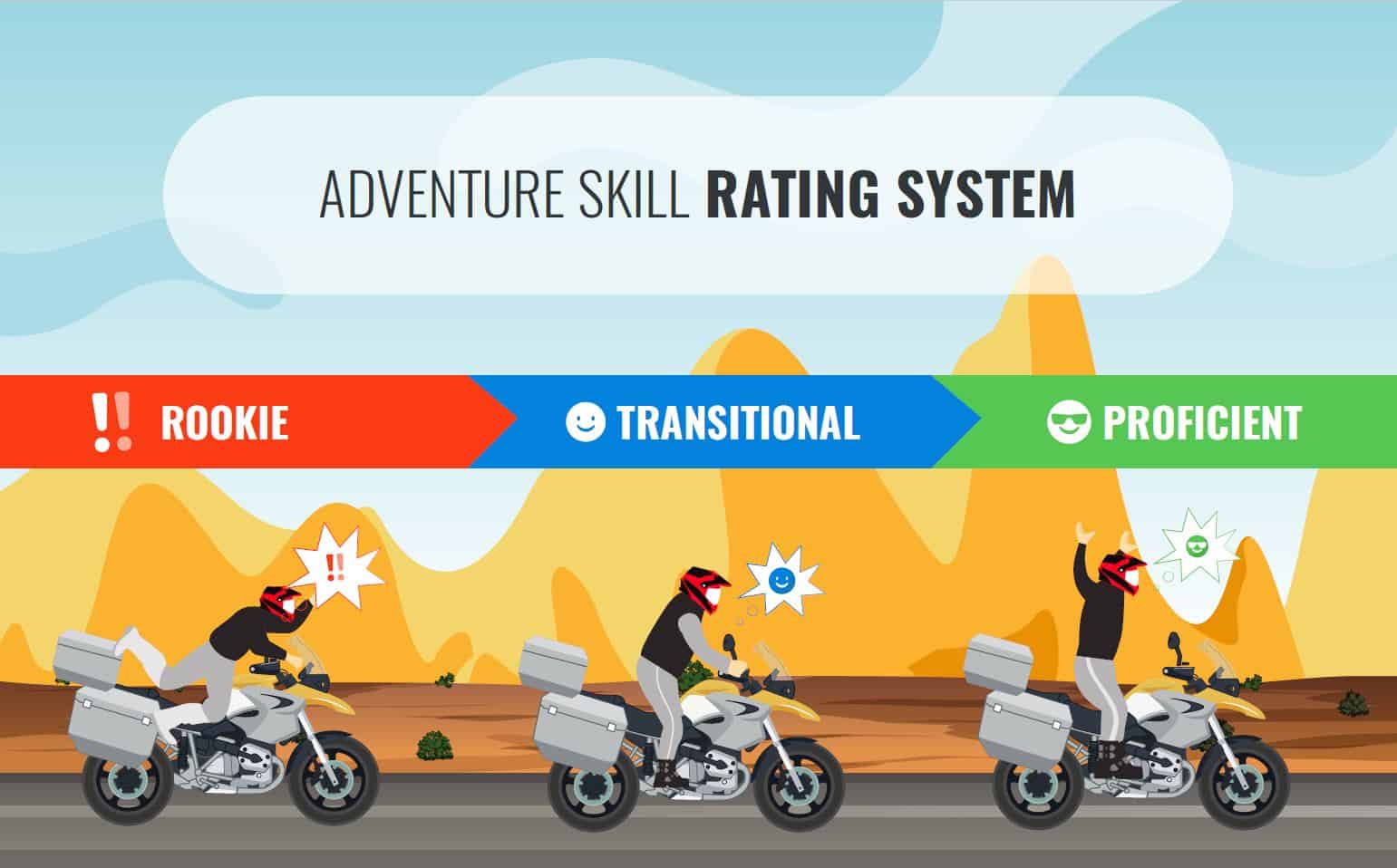
This system is intended to assist ADV riders in identifying their ability to ride certain terrain features and rate their ability to ride different terrain features. Please use this guide with introspection and note that this guide is not intended to rate a particular trail, but intended to rate YOUR ability to ride a LOADED ADVENTURE BIKE through various classes of terrain features.
This rating system defines your riding skill as an adventure rider and not as a dirt bike or dual-sport rider. Therefore, the following assumptions are made:

Assumptions that must be true in order to use this system:
Bike
You are riding a mid-size to large displacement (650cc – 1290cc) adventure-style motorcycle.
Mods
Your ADV bike is in near-stock configuration with only minor modifications for protection, comfort and luggage. Minor upgrades to suspension (to account for heavier loads) or improvements to braking or tires also fall into the “near stock” category.
Use
You are traveling or camping, and therefore will have a luggage system with at least an intermediate load.
1. Baseline
Determine your baseline by relating it to how you feel after finishing an average street ride. Identify your fatigue and stress levels, your ability to multitask if needed, and how many rest breaks you typically take.
2. Terrain
Choose the class of terrain features that most closely resembles the type of trails you you ride. Click on a symbol to read a list of terrain features in each class.
3. Skill
Consider the baseline you established in Step 1, then use this Skill Assessment Chart to determine your skill level in the terrain you chose.
For example, if you ride in moderate terrain and you are exhausted (as compared to your baseline) and crash often, then you are a rookie at the moderate terrain level.
Rookie
You are a rookie if two or more of the following are true:
- Falls or near misses are frequent
- You crash or have frequent near-crashes
- You are exhausted, or find yourself using a lot of energy to ride
- You expect (or do) receive terrain damage to the motorcycle (ie. pinch flats, bent rims, severely damaged skid plates, etc.)
- You are unable to multitask while riding, if needed
TRANSITIONAL
You are transitioning towards proficiency if:
- Tip overs, falls and near misses are infrequent
- You are not damaging your motorcycle due to terrain
- Riding the terrain is not tiring
- Breaks are needed for food, not for resting
- You are capable of multitasking while riding
PROFICIENT
Consider yourself proficient if:
- You do not fall, nor have any near misses
- You do not expect nor receive any damage to the motorcycle due to terrain (ie. pinch flats, bent rims, severely damaged skid plates)
- You use very little energy to ride
- You only need food, weather, or stretching breaks and do not need breaks for resting
- You can easily multitask while riding, if needed
4. Additional Considerations
There is always a transitional period as you increase your proficiency within each feature. We have all experienced a section of trail that was well beyond our skill level, but just because we made it through, does not mean we are proficient with that level of riding. If you are looking to increase proficiency with minimal damage to yourself or your bike, seek out professional motorcycle training.
To learn how to ride difficult to severe terrain with filled panniers, read how to become a weightless rider. In addition, watch The Weightless Rider on Youtube.
You may be wondering why this Adventure Skill Rating System isn’t simpler. As a whole, adventure riders are very diverse in age, health, height, vision, experience, or even how much they carry or what they ride. To do my best to avoid penalizing a skilled rider who is forced to ride slower due to poor vision, or classify a rider as more skilled when they’re riding a smaller motorcycle, it quickly became evident the rating system would be complex and imperfect. This also means that your skill rating may change if you ride a different motorcycle.
This rating system assumes you are riding a large cc adventure bike with at least a moderate load, and have a 50/50 adventure tire or street tires installed. As you equip your motorcycle towards off-road use with knobbier tires, lighter loads, and improved suspension, the rating shifts towards more proficient, skewing your actual proficiency for each skill level. To accurately asses your level of proficiency, carefully consider how you perform when/if you were fully loaded with gear and traveling.
As a professional ADV trainer, I spend a lot of time developing and polishing my riding skills on an unladen ADV bike with at least 50/50 or 90/10 tires and minimal weight. This is how I encourage other riders to train, but we cannot rate ourselves on how we perform as an ADV rider in these ideal conditions. This rating system is designed to target the traveling ADV rider and you MUST rate yourself in that light.
It is not uncommon for riders to contact me for training because they ride slower than their friends and claim to be less skilled. Occasionally this is true; other times they are, in fact, the better rider. Think about a former world champion (road racing, MX racing, etc.) riding past their prime. They will ride slower than they used to, however it is highly unlikely they are less skilled at riding.
Adventure riders typically fall into the age bracket where vision, reaction time, and stamina are at a decline. As such, older ADV riders develop skills such as improved judgment, more relaxed riding strategies, and gain additional education on riding off-road. In short, speed matters… but not as much as you might think when rating yourself.
Certainly, the more skilled you are, the better you read and adapt to the terrain, and your speed is likely to increase. However, there is a limit. There is a point where the road or trail will dictate your maximum speed with concerns such as oncoming traffic on a two-way trail. The motorcycle’s suspension or tire grip may also limit your speed on a particular trail. An expert rider on a KTM 790 Adventure Rally may ride fast, but that same rider on a BMW R1250GS may ride a little slower.
When does speed matter? Speed matters if you are riding so slow, you must work harder than necessary to keep stable. Speed matters if you are riding so fast you are blowing past your limits, having near misses, or react to oncoming traffic or obstacles rather than planning.
No matter how skilled you are, you should never ride faster than you can see or stop.
You are considered a novice rider if any of the following are true:
- Standing
You do not stand while riding moderate (or above) terrain, or prefer sitting over standing in technical terrain. - Fatigue
You are stiff while riding off-road or find riding off-road to be exhausting. - Speed Control
You use throttle for speed control rather than the clutch (for DCT riders, replace ‘clutch’ with ‘rear brake’. - Braking
You do not use the front brake or are uncomfortable braking off-road. - Speed Control
You paddlewalk through certain terrain features or put your feet down in gravel, mud, sand, or lo0se rock.
Adventure Skill Rating System

Class 1: Novice
The novice level begins for most riders before they ever consider adventure riding. Gravel driveways, road construction with hardpacked gravel or dirt and well-maintained dirt/gravel roads is where this level starts. These types of terrain features are easily managed on a street motorcycle with street tires and do not require any specific off-road riding skills.

Features
- Old or poorly-maintained paved roads
- Maintained/graded gravel or dirt roads
- Sticks or small tree limbs
- Water crossings less than 2" (5cm) deep
- Modest inclines/declines (road-like grades)
To start riding off-road, consider taking the ADV Training Camp to develop proficiency on novice terrain.
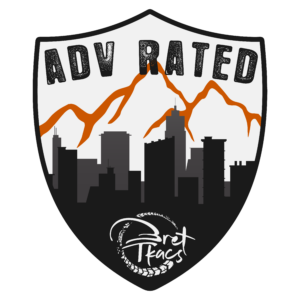

Class 2: BASIC
Basic terrain is the most common terrain for ADV riders of all levels. This terrain could easily be driven in a standard car. Basic ADV terrain typically consists of simple, predictable features with occasional challenges for traction, or obstacles that would require a rider to slow down before crossing.

Features
- Full lane or two-track graded dirt/gravel roads
- Wide, shallow ruts
- Packed sand
- Washboard or minor water bars
- Obstacles or ledges less than 4" (10cm) high
- Sections of loose rock less than 3” (8cm) deep
- Patches of soft gravel, shallow sand, or surface mud
- Slow-moving water crossings less than 4" (10cm) deep
- Water crossings have a solid base
- Minimal loose, rolling rocks
- Light gravel with rain ruts
To develop proficiency, consider taking an ADV Training Camp to attain competency on basic terrain.

Class 3: MODERATE
Moderate terrain is where proper training and off-road riding skills become important. Moderate terrain is often the most sought-out terrain by ADV riders when traveling. Seeking to become proficient at moderate terrain and reach the level of intermediate rider is a worthy goal. Moderate terrain is also where techniques such as standing and precise clutch control are required to reach a proficient status.

Features
- Dry, narrow single-track ruts
- Sections of shallow mud
- Soft surface gravel (fresh road gravel)
- Patches of soft sand less than 100 ft. (30m) long
- Wet grass
- Obstacles up to 6" (15cm) high
- Water crossings with a mud or loose rock base
- Water crossings under 6" (15cm) deep
- Single-lane switchbacks
- Loose rock patches less than 5" (13cm) diameter on inclines
- Ledges less than 4” (10cm) on inclines
- Ledges less than 6” (15cm) on declines
To develop proficiency on moderate terrain, consider taking the ADV Training Camp or some Challenge Training.

Class 4: DIFFICULT
Now it’s time to really start having fun. Most routes only have short sections that are rated as difficult. This may not be an issue for a rider that is proficient in intermediate terrain, however if a route is consistently rated as difficult, that can contribute to significant fatigue causing errors in technique and/or judgment. Difficult terrain can be very dangerous for riders lacking proper riding gear (including motocross boots), riding skills or motorcycle setup. Difficult terrain may also be signed for high clearance or 4×4 vehicles.

Features
- Narrow, two-track switchbacks
- Snow
- Sections of loose rocks larger than 5" (13cm) diameter
- Wet, narrow single-track ruts
- Deep, soft gravel greater than 3" (8cm) deep
- Mud or sand requiring momentum to cross
- Water crossings with a loose base
- Moderate-flow water crossings shallower than 9" (23cm)
- Fast-flow water crossings less than 7” (18cm) deep
- Loose rocks under 6" (15cm) diameter
- Mud and water on hill climbs
To develop proficiency on difficult terrain, you must be very skilled with smooth controls. Consider refining your skills at a Challenge Training course.

Class 5: SEVERE
Because this ADV rider skill rating system assumes you will be riding a loaded ADV bike, it is unlikely for most riders to encounter severe terrain accidently. Many riders might encounter severe terrain during long trips but few riders will ever reach the level of proficient. An expert ADV rider is capable of riding comfortably, relaxed and unfazed on severe terrain that is impassable by unmodified, un-winched Jeep or trails intended for dirt bikes.
Features
- Trails intended primarily for dirt bikes
- Single-track switchback sections
- Impassible trails except under ideal conditions
- May need mechanical assistance (winch)
- Narrow sections with side camber
- Deep, soft gravel greater than 3" (8cm) deep
- Mud or sand requiring momentum to cross
- Fast-flow water crossings deeper than 12" (30cm)
- Water crossings with a poor base
- Obstacles or ledges equal to or taller than the front axle
- Deep, soft sand
- Sticky mud
To develop proficiency on expert terrain, you must be very skilled with smooth controls. Contact Bret for specific training.
